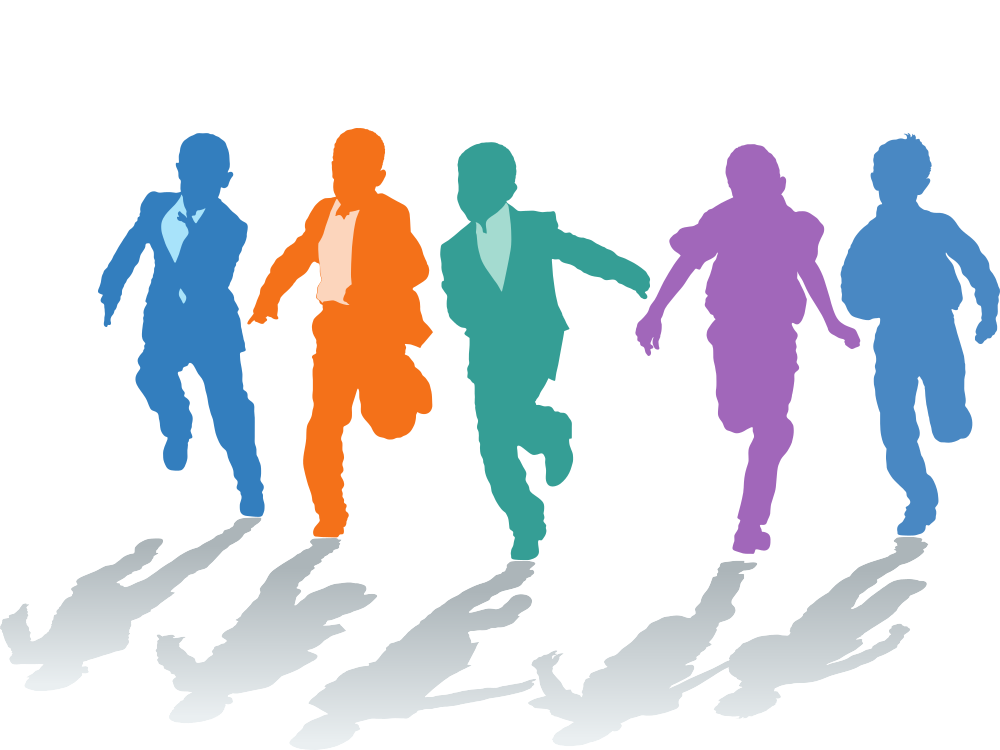School uniform – How schools get it right and wrong

We weigh up the pros and cons of school uniforms, from purportedly promoting equality and focus, to the financial burden on parents…

- by Teachwire
- Classroom expertise and free resources for teachers

Schools in England are not required to have a uniform, although the DfE strongly recommends it. According to research by clothing supplier Trutex, 99% of UK secondary schools have a uniform.
Here we set out questions you should ask yourself about your school uniform policy, what the research about school uniform says and the ins and outs of the government’s statutory school uniform guidance…
3 questions to ask about your uniform policy
If your uniform policy is consistent, up-to-date and clearly communicated, there’s no reason why enforcing it should make the front page, says headteacher Vic Goddard…
Q1) How ‘uniform’ is your school uniform policy for all young people?
Consistency is the key factor that can sometimes cause problems for schools. I am amazed at how observant some of our young people, and their parents/carers, are when they think someone else is getting away with something that we’re picking them up on.
Of course, consistency of enforcement can be difficult when you understand the diverse resources of the population you serve.
With school uniform, the answer for us has been to make ours as affordable and accessible as possible. You can buy most of it from ASDA for a few pounds.
This, however, is an aspect I think we can improve on as a sector. It’s easy for us to reply (although probably not to their faces) when a parent/carer tells us they cannot afford to replace something with, “I bet you’d find the money to replace your mobile phone/TV etc”.
“The answer for us has been to make ours as affordable and accessible as possible”
This is where we can miss the point. It’s not the parent/carer who is being humiliated. If their school uniform policy is so important to a school, then they may have to support it.
This means helping some students not to be singled out by the poor decisions of the people that are supposed to look out for them.
We have spare uniforms and a washer/dryer in school to help some of our young people comply. After all, in some cases it’s not that they don’t want to – it’s just that they’re unable to.
Q2) Is your uniform policy still relevant and appropriate?
Previously we had a policy on hairstyles that includes no tramlines. The problem we had was that the fashion, mainly set by the Premier League it seems, of having a very distinct parting meant our students were choosing tramlines to improve this.
Quite rightly, the pastoral team were picking them up about this. I started to have a few parents/carers make contact.
The problem I had was that it looked really smart. In fact, it was really only a ‘short back and sides’. Students would have deemed it very uncool only a handful of years ago.
So we spoke to our parent and student councils and realised that the policy hadn’t changed since the 80s, and that the likelihood of Kid and Play-style tramlines making a comeback was slim!
“We realised that the policy hadn’t changed since the 80s”
Q3) Is everyone clear about expectations and do they have time to respond?
I always talk about our expectations to parents/carers at our open evening before they have chosen their secondary school. Then I do it again on the induction evening prior to their young person starting with us.
I worry that it may come across as negative. However, by doing it then I can be absolutely certain that if they choose to send their child to Passmores, they are aware of what we require and how things need to be. Therefore, they also choose to follow our rules – all of them.
The bottom line is that a policy decision needs to be fair and balanced for the young person. However, you also need to communicate it well prior to, and during, implementation.
Vic Goddard is headteacher at Passmores Academy, as seen on Channel 4’s Educating Essex. He is the author of The Best Job in the World. You can follow him on X at @vicgoddard.
Research about school uniform

Gordon Cairns looks at why the claims typically made for the benefits of school uniforms might serve to conceal a rather different aim…
Dr Rachel Shanks, a senior lecturer in education at the University of Aberdeen, authored a report, ‘School Uniform Policy in Scottish Schools, Control and Consent’.
You could easily apply the findings to schools across the UK. After all, our almost universal adoption of uniform is at odds with most of Europe.
Dr Shanks and her co-authors analysed the school rules surrounding uniform at each of Scotland’s 357 publicly funded secondary schools. Almost all of them have a school uniform.
They found that while school uniforms are supposed to foster a sense of belonging and raise achievement, there’s little proof that they actually do.
The report also reviews some recent research which found no connection between the wearing of uniforms and academic success. There was also no link to improved attainment – reasons often given to justify their use.
In fact, the authors only cite one study as having made a positive connection between wearing uniform and improved attainment. It found that uniformed students settled in class five minutes earlier than those who weren’t.
“There was also no link to improved attainment”
They didn’t remark upon whether this advantage was down to uniform alone or other factors. For example, a positive school ethos.
Why do schools insist on a uniform?
If there’s no evidence of uniforms creating a sense of belonging, making schools more secure or improving learning, why do so many schools and academies still ardently adhere to retaining a school dress code?
One reason might be a desire on the part of senior leaders to control a fundamental aspect of the students’ lives. This is by policing what they wear.
One of the study’s authors, Jasper Friedrich, identified a tension between the practice of enforcing strict uniform policies through punitive measures, and the justifications for such practices that highlighted pupil wellbeing.
As Fridrich puts it, “While almost all policies include highly detailed regulations and strict enforcement measures, the justifications tend to focus on ‘soft’ values. For example, this might be creating a sense of belonging and giving pupils self-confidence.”
Clear message
Dr Shanks believes that schools’ strict enforcement of dress codes – where, as she describes, “Every infraction is pounced on,” could be seen as a clear message to students and parents about who is in charge.
She argues that one reason why schools are so rigorous in their measuring of skirt lengths, or demands that students don’t come to school with their hair braided, is down to those in authority wielding power in the most visible, unsubtle manner possible.
In her view, “It’s not about uniform. It’s about saying who is in control. And this is saying the teachers are in control of everything that is to do with the young person while they are on the school premises.”
Moreover, when a school switches governance or appoints a new headteacher, the most visible way of showing such change is to redesign the clothes the school’s young people have to wear.
“It’s not about uniform. It’s about saying who is in control”
“Senior management sometimes use uniform as a signalling mechanism,” Dr Shanks notes. “The message is, ‘We have new management in, and we’re going to be strict on uniform.’”
Gendered differences in school uniform
Perhaps unsurprisingly, the team’s report finds that schools’ dress codes are much more restrictive for female students than their male peers. They’re also often couched in frustratingly vague terms. For example, not stating the precise length a skirt has to be for it to be deemed ‘appropriate’.
As Dr Shanks points out, “Uniform is very gendered for girls and boys. Girls have to police themselves in terms of what they are wearing – even in the language used in the policies.
“‘A sense of decency’ or ‘a sense of modesty’ when thinking about what length skirts should be. Some even talked about not ‘causing offence’.
“Somehow, a girl’s skirt can cause offence. But the only time boys were talked about in the same manner was when boys couldn’t wear tight-fitting swimming trunks. Though that was in the policy of only one school.”
“Somehow, a girl’s skirt can cause offence”
Then there’s the anomaly of females still having to wear traditionally male items of clothing. “Why do we make girls wear ties? It’s very much thinking about the schoolboy, and trying to replicate that onto girls.”
Dr Shanks’ sense is that these draconian policies mean schools are missing the chance to collaborate more productively with their young people.
“This is a real opportunity to work with the young people about what they want to wear,” she says. “With what is comfortable and practical. Zero tolerance policies are negating the possibility of young people being involved in decisions about them.”
And yet, she still firmly believes that young people should continue to wear uniform. Just not in their current, typically traditional form. “There is a marked difference to what children wear to school in the UK and the rest of Europe.”
Equality and sustainability
Like many, Dr Shanks accepts that the wearing of school uniform is still necessary in this country, due to the gulf between rich and poor.
She points to a study carried out in the North East, which found that attendance rates would fall during non-uniform days, when young people went to school wearing their own clothes. Some did still attend, but in uniform, pretending they had ‘forgotten’ about the event.
“Attendance rates would fall during non-uniform days”
She accepts that wearing uniform doesn’t create a completely level playing field. This is because students will still judge their peers by comparing jackets, bags and shoes.. But that they do at least help reduce the stigma of poverty.
Better school uniforms
So what should school students wear? Shanks recommends that schools introduce uniforms comprising durable, comfortable and affordable clothes that could have a school badge attached. And allowing parents to buy generic outfits from supermarkets, rather than more expensive selected school suppliers.
It could also be possible to make uniform items recyclable, thus preventing uniforms that have been outgrown from heading for landfill.
De-gendered clothing would further help to address equality issues around dress code and appearance. And in place of the bright blues and stripes of her youth, Dr Shanks suggests specifying clothes in dark colours that wouldn’t need to be washed as often.
She also suggests looking to the recent past for some instructive lessons on what the uniforms of the future could look like.
“During COVID, young people were at home in their pyjamas or sweatpants. They were comfortable in what they were wearing, and still perfectly capable of doing their schoolwork. So why do they have to wear tight-fitting, uncomfortable and unsuitable clothes now?”
Gordon Cairns is an English and forest school teacher who works in a unit for secondary pupils with ASD; he also writes about education, society, cycling and football for a number of publications.
Statutory school uniform guidance

Matthew Easter, co-chair of The Schoolwear Association, discusses the ins and outs of the government’s statutory school uniform guidance, published in 2021…
What is a ‘sensible’ school uniform policy?
A sensible school uniform policy should take a number of factors into account, including:
- value for parents
- quality and durability of garments
- the uniform’s environmental impact
Local factors can lead to the adoption of different uniform policies – schools retain the autonomy to make the right decisions for their pupils.
An effective uniform policy will create consistency across a school, helping to increase unity and discipline, as well as helping to act as a social leveller, reducing the risks of peer pressure and bullying associated with wearing the latest fashion trends.
A mandated uniform should clearly be affordable for parents, but focusing on the price of garments alone risks overlooking the way in which high quality uniforms will be sustainable and long-lasting, and thus more economical for families in the long term.
Better quality garments can also encourage the emergence of an active secondhand service within a school community.
Can a school appoint only one supplier?
Yes. Sole supplier arrangements are still possible, but you’ll need to show you have conducted an appropriate tender process at least every five years.
The Schoolwear Association strongly supports the role of competition in ensuring that uniform costs remain as low as possible for families, and understands the need for effective tendering at the point of selection.
Sole supply arrangements can deliver lower costs due to economies of scale, better guarantees of year-round supplies for schools, parents and pupils, and support parents who might be struggling with uniform costs.
How does a school go about tendering?
The Schoolwear Association can support schools undertaking this process to ensure that they’re able to tender appropriately and in the easiest way, while seeing to it that parents and families get the best value and service from their uniform retailers.
We would encourage schools to consider uniform suppliers that are members of the Schoolwear Association and have signed our stringent Code of Practice, which sets industry best practice.
Key considerations when tendering for a uniform supplier include cost, product quality, ethical sourcing issues and the ability to service the business to the satisfaction of both the school and parents.
Should school uniform be abolished?

In an education system that is supposed to champion choice and autonomy, what message are we really sending with strict school uniform policies, asks Fiona Millar…
Evidence that uniforms lead to higher standards is flimsy. Most of our continental neighbours manage perfectly well without them, often achieving more highly than we do when it comes to academic standards and narrowing gaps between different groups of pupils.
Introducing a uniform without improved leadership, management and teaching is unlikely to be a game changer.
In some ways uniform can be a great leveller – unless of course it is only available from a selective supplier at exorbitant cost and used as part of a school’s open evening to send a subtle signal to parents about the school’s values and intake.
Then it becomes a crafty tool in the process of self-selection that smooths the school hierarchy.
Uniforms of the so called ‘better’ schools are easily recognised, investing status rather than equality into their wearers in the same way as the uniform of a poorly regarded school demonises its pupils.
Why else would the pre-pubescent prep school pupils of the South London school attended by Prince Charles consent to walk the streets in corduroy knickerbockers and boaters if it weren’t to advertise the fact that they are in some way superior to their peers? Or the boys at Eton College go to lessons in tailcoats and white bow ties?
“It becomes a crafty tool in the process of self-selection that smooths the school hierarchy”
I would agree that a poorly enforced uniform policy is probably the worst of all worlds – much better to have no uniform at all.
But how much time is taken each year in enforcing pointless uniform codes? And that is not where it ends.
Divide and control
One academy has gone a dramatic step further and banned what it describes as ‘extreme’ haircuts. Another free school rules on the sorts of watches its pupils are permitted to wear.
But don’t teachers have better things to do than to measure the height of a student’s hairstyle?
Of course we want our schools to be ordered, calm and productive environments. For some children even more rigid discipline may be the necessary framework within which they are more likely to succeed. But this needs to be kept in perspective.
Beneath the seductive message that uniforms are a powerful social justice tool, there is clearly the possibility that they are being used in a way that is socially divisive, about branding rather than real education, and as a form of social control.
“Don’t teachers have better things to do than to measure the height of a student’s hairstyle?”
Successive governments have talked the talk about diversity, autonomy and ridding our school system of the ‘deadening hand of uniformity’ in the last 30 years.
But forcing every child to dress identically, with repressive implementation, does exactly the reverse, especially at a time when we are also driving individual creativity out of the curriculum.
Fiona Millar is a columnist for The Guardian and a co-founder of the Local Schools Network; for more information, visit fionamillar.com or follow @schooltruth.










